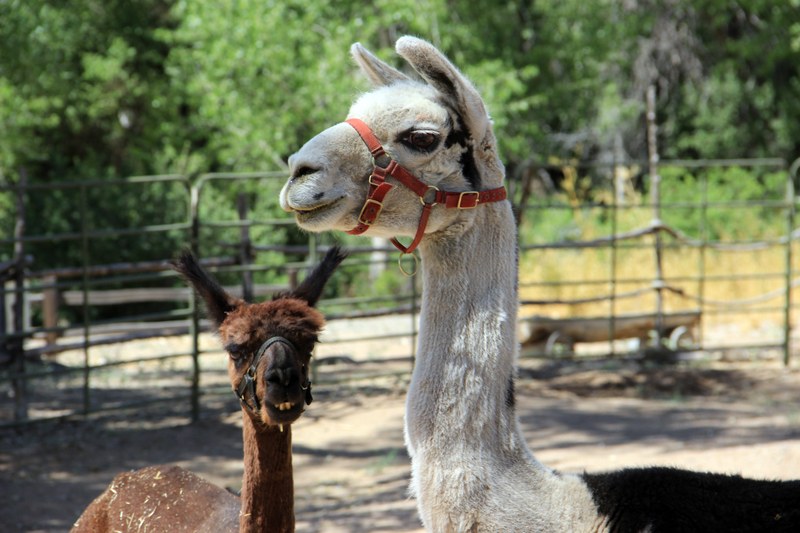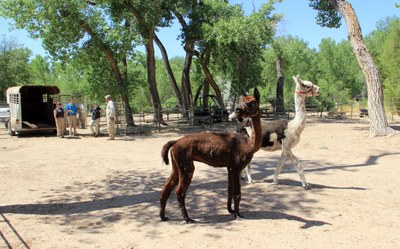
Llamas and Alpaca Move to Heritage Farm
The move will offer more opportunities for the group to graze and take part in other natural behaviors.
June 22, 2022 - Earlier this month, the ABQ BioPark moved its three llamas and a single alpaca from a behind-the-scenes home at the Zoo to a new corral at the Heritage Farm.
On June 8, staff moved the BioPark's 19-year-old male llama, Andy, and its 15-year-old male alpaca Fezzik. Two female llamas, 14-year-old Angel and 17-year-old Mijita, were moved over just a few days later.

"I'm really excited for these guys moving over here," said Allison Galves, clinic keeper. Galves, who has cared for these animals over the last two years, said the new space will give them a lot more room to roam. "They are going to hopefully have greater access to pasture, going out more and grazing on grass...just more natural behaviors that these guys would normally do."
In order to get the group ready for their big move, caretakers trained with them for about two weeks to desensitize them to the transport trailer and ramp. Staff rewarded each animal with grain (their favorite treat) for simply approaching the trailer on halter and standing near it. Next, the llamas and alpaca learned to step up onto the ramp and were rewarded when they took steps up toward the trailer entrance. Eventually, they went all the way up and were given a big reward for standing inside the trailer and eventually coming back down the ramp.
"The point of this training was to get them to associate going into the trailer with a positive reward so that the process of transport was less stressful on them as well as making it easier and less time consuming for us to try to get them inside by force on transport day," Galves said. "They’re so smart, and some of them were already going fully into the trailer after only two to three sessions. Overall, it went really well!"
Located just northeast of the conservatories, the Rio Grande Heritage Farm includes a large kitchen garden, crop field, orchard, vineyard, berry bushes and an adobe farmhouse. In addition to the farm's new llama and alpaca residents, it is home to an American paint horse, a milking shorthorn steer, Alpine goats, Navajo-Churro sheep and Dominique chickens.
Llamas and alpacas are native to the Andes region of South America. Although the two camelids look similar in appearance, alpacas are often noticeably smaller than llamas and have fuzzier heads.
